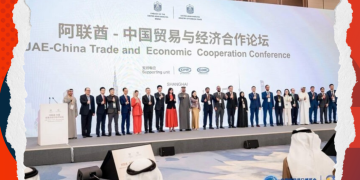In a decisive move, Saudi Arabia’s Capital Market Authority (CMA) has formalized a policy limiting foreign ownership in listed companies to a maximum of 49%. The regulations further restrict non-resident individuals to a 10% cap and narrow eligibility to six specific categories of investors. This marks a key step in the Kingdom’s broader strategy to open its capital markets while retaining strategic control.
What the Policy Entails
- Foreign ownership across listed Saudi companies is now capped at 49%.
- Non-resident individual investors are limited to just 10% ownership per company.
- Only six pre-defined categories of foreign investors are eligible to participate.
- The move is designed to modernize capital market access while balancing national economic security.
Implications for Tech Sector Investors
Prospects
- Enhanced Market Clarity & Access
The new caps establish clear investment ceilings and eligibility criteria, reducing regulatory ambiguity, making it easier for institutional and qualified investors to plan their Saudi tech investments. - Encouraging Foreign Capital, Selectively
While not fully liberalized, these reforms signal a willingness to attract foreign capital under controlled conditions, a gradual opening that aligns with Vision 2030’s diversification goals. - Incentives for Strategic Partnerships
Limited participation may actually promote ventures involving local partners or sovereign-backed entities like the Public Investment Fund. These partnerships can yield enhanced support, faster approvals, and alignment with national innovation goals. - Potential for Premium Valuation
A constrained supply of foreign-owned equity may create scarcity-driven upside, particularly when demand surges, tech stocks could benefit from higher valuation multiples.
Challenges
- Limited Upside from Ownership
Investors eyeing majority control or strategic influence will find their options constrained. The 49% ceiling caps both governance and economic participation. - Competitive Access to Slots
With only six investor categories eligible, competition to qualify may be fierce, especially for high-demand tech listings. - Complex Foreign Structuring
Individual investors face even tighter limits. Institutions may need to navigate convoluted ownership vehicles or local partnerships to stay compliant. - Possible Regulatory Overhangs
While supportive of tech, Saudi policies often come with strings, expect requirements around local job creation, knowledge transfer, or localization, especially in high-tech sectors.
Verdict: Good or Bad for Tech Investors?
Overall, this isn’t a binary outcome. For well-capitalized, strategic institutional investors, this is a manageable and improving environment, offering structured access, rising valuations, and alignment with national ambition.
For others(especially individuals or funds seeking majority stakes or full autonomy), this feels restrictive. It limits upside, complicates deal structures, and injects uncertainty into the bilateral investor-regulator relationship.
Strategic Takeaways for Tech Investors
- Institutional investors: Engage, qualify, and structure carefully; this is a window to a rapidly modernizing market.
- Foreign individuals or small players: Consider alternative pathways; ETFs, dual listings, or regional funds may offer better access.
- Venture and private equity: Prioritize partnerships with the Public Investment Fund or local accelerators to gain influence and access.
- Valuation opportunities: The cap may support high valuations for tech names; review pricing dynamics carefully.
Bottom Line
Saudi Arabia’s updated foreign ownership policy strikes a deliberate balance, opening its markets, but on its own terms. For tech investors, it’s a cautiously optimistic environment with constraints, rewarding for those who navigate carefully, but restrictive for those seeking full control.














